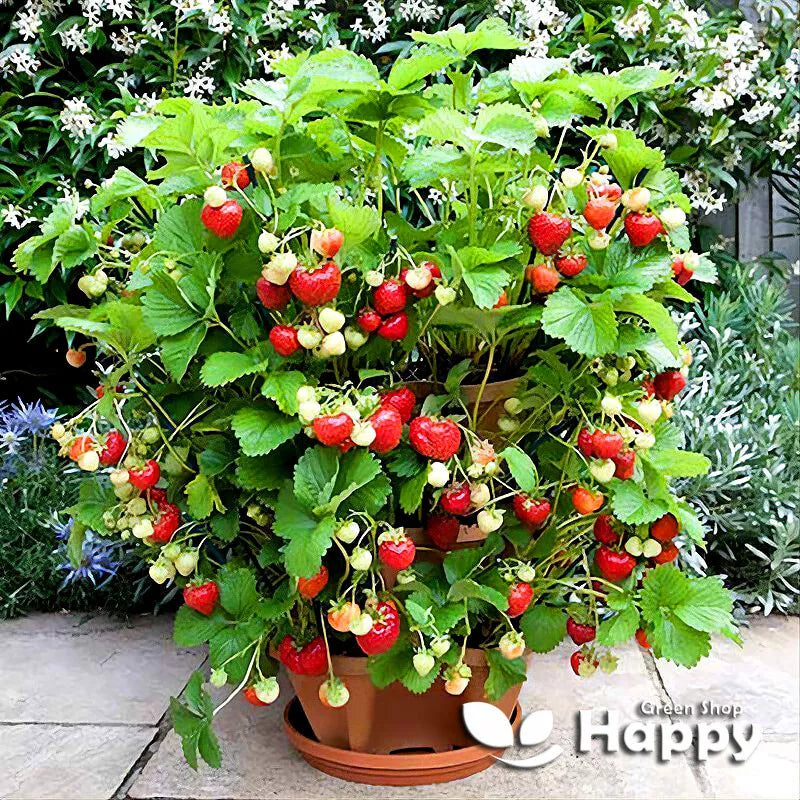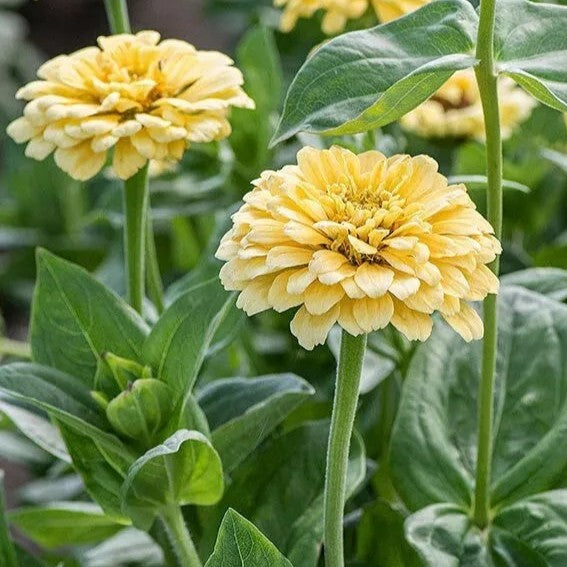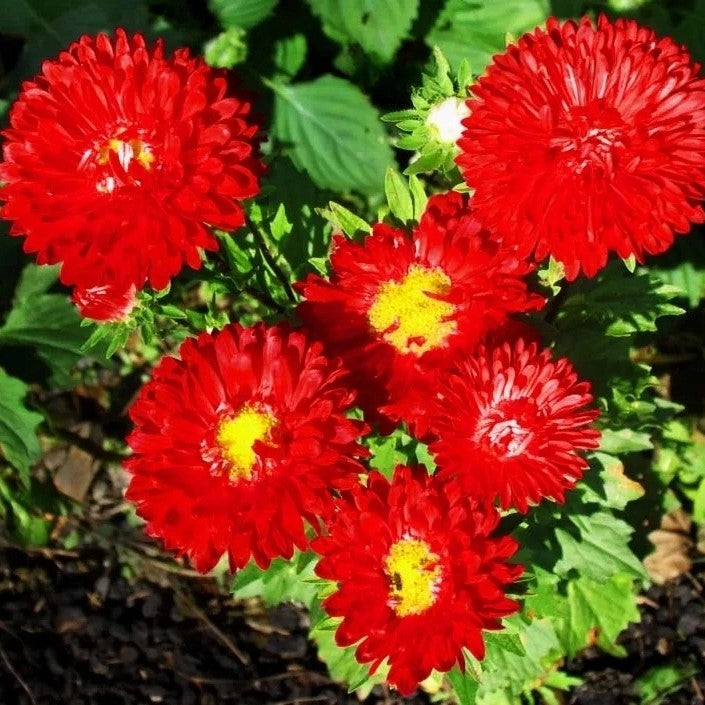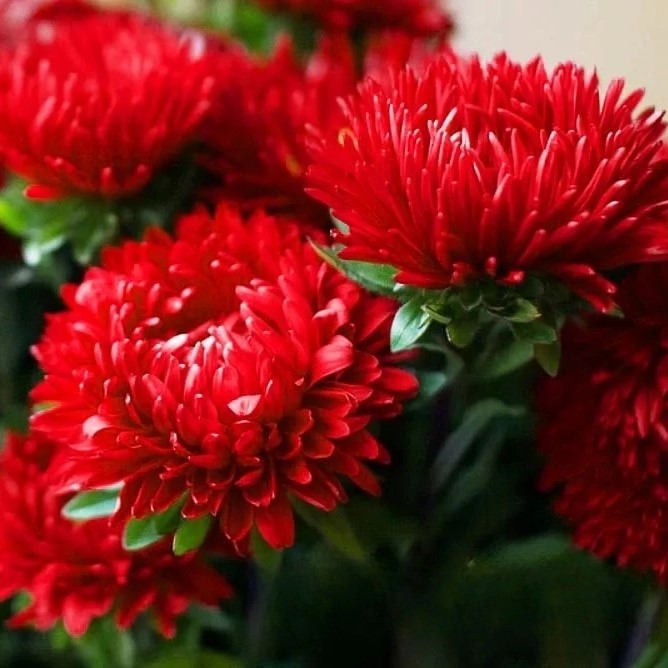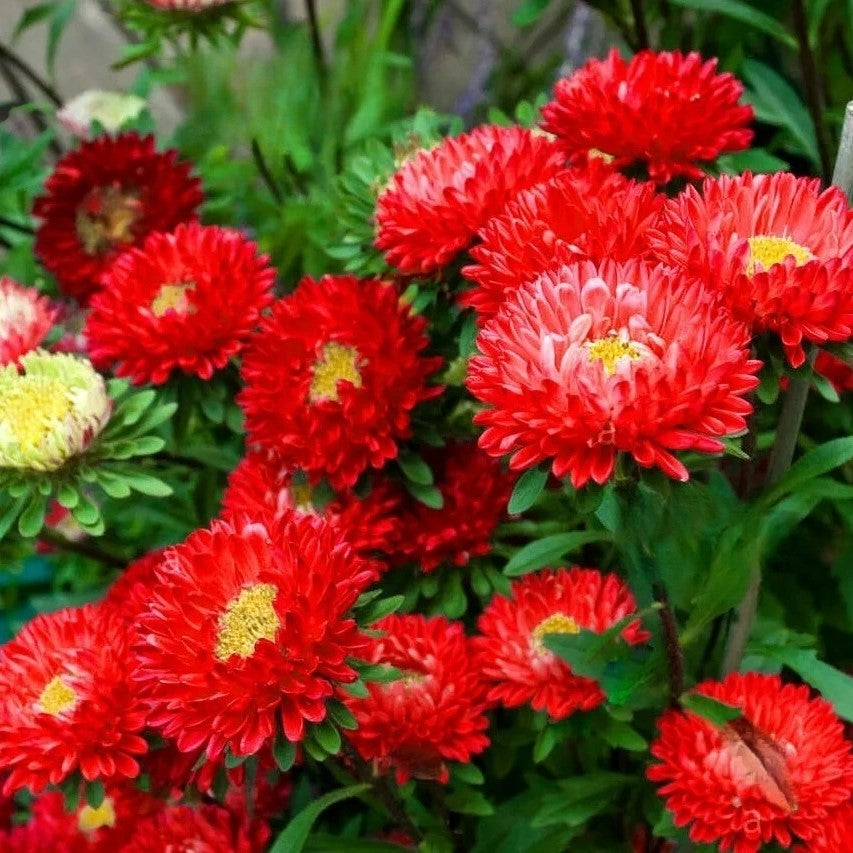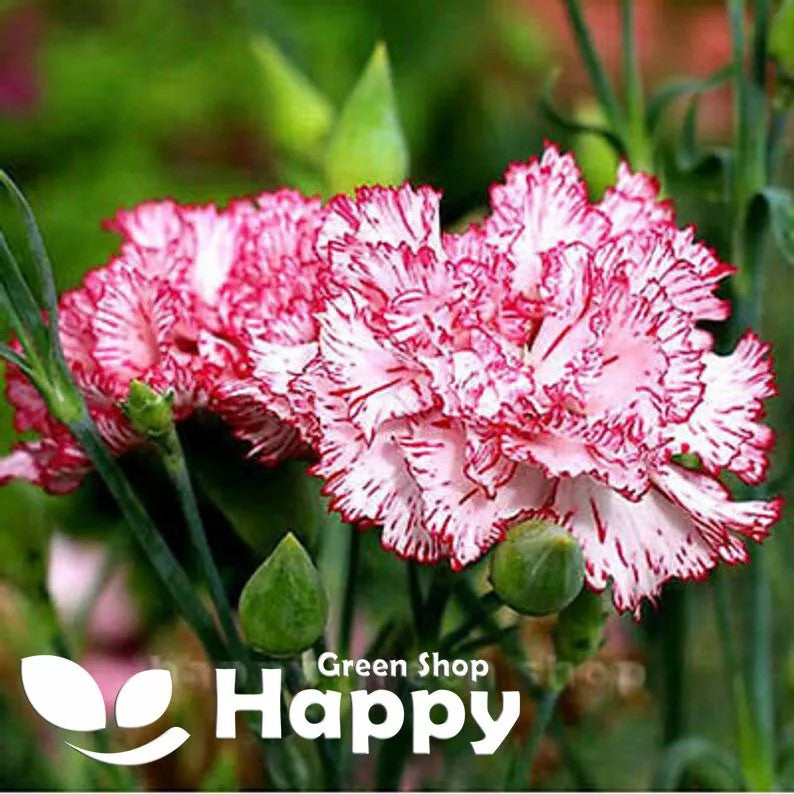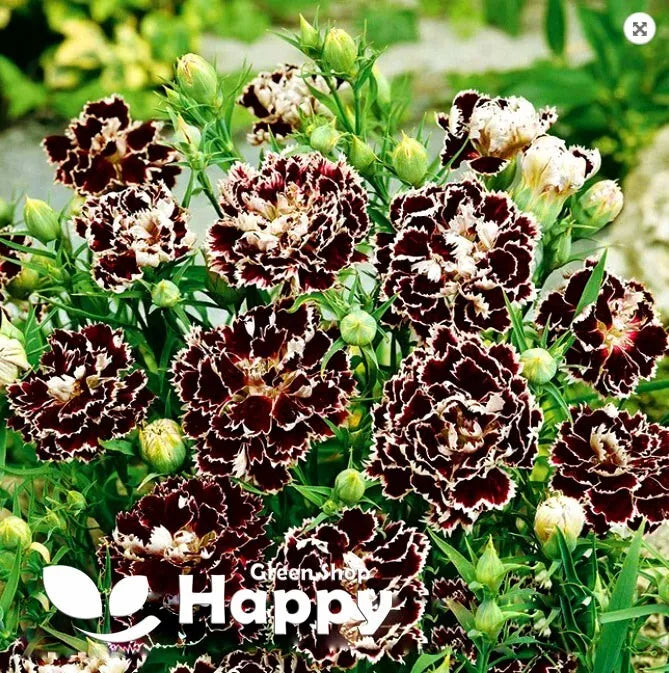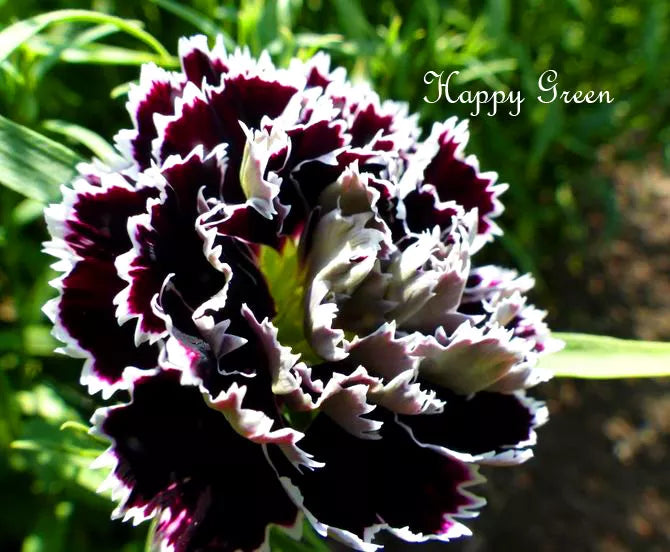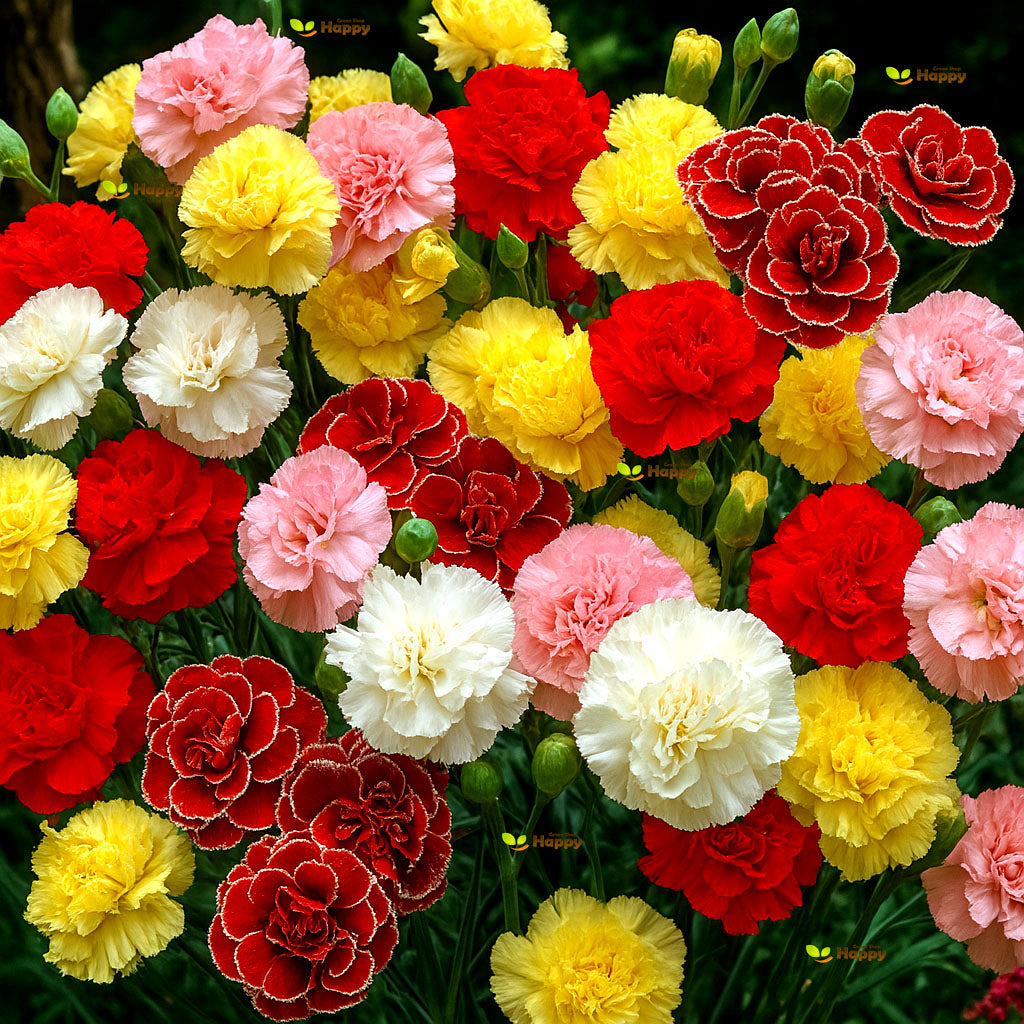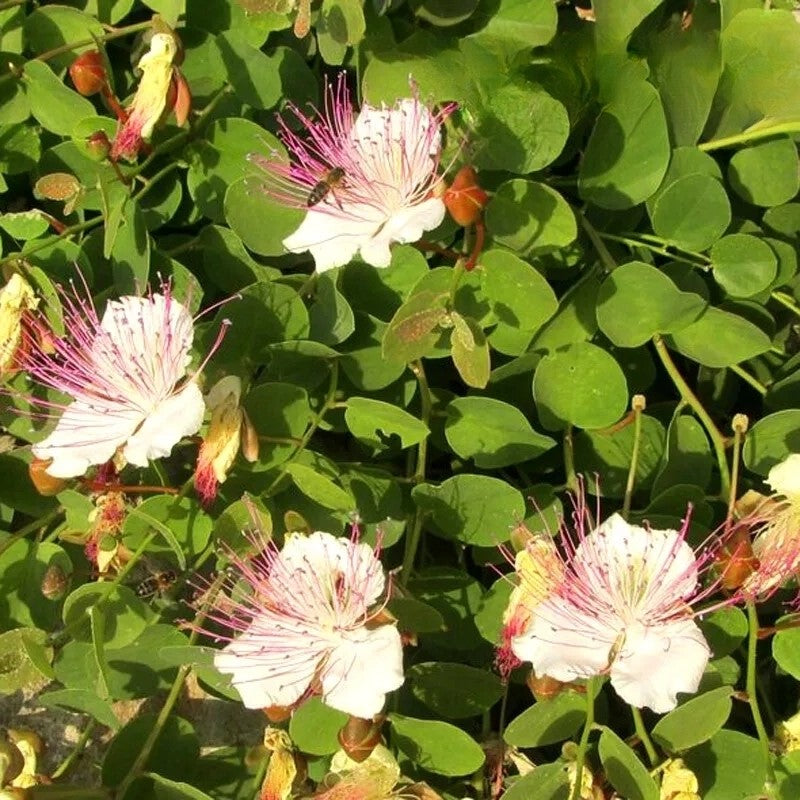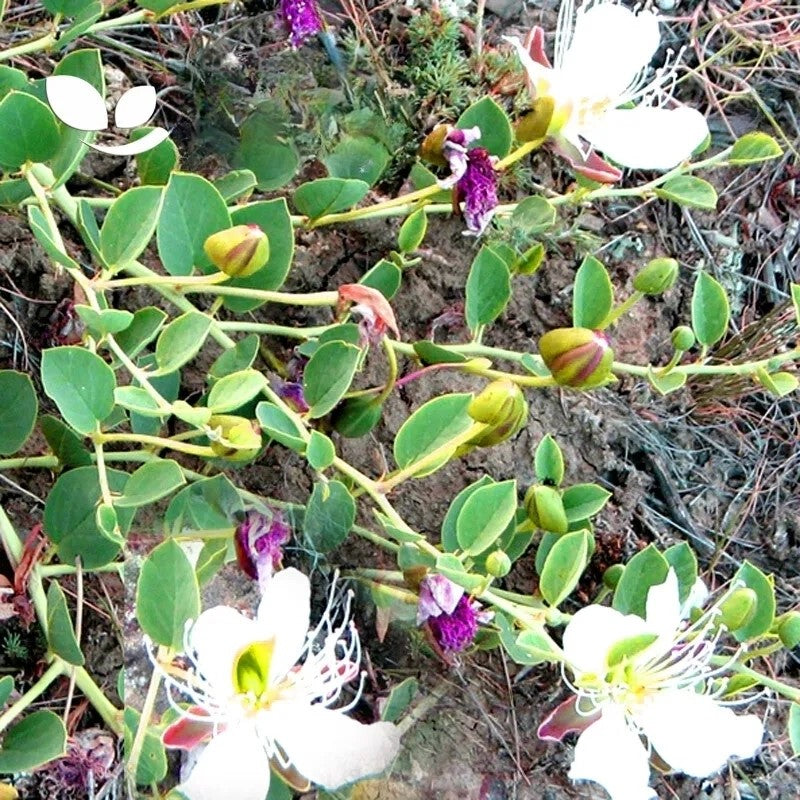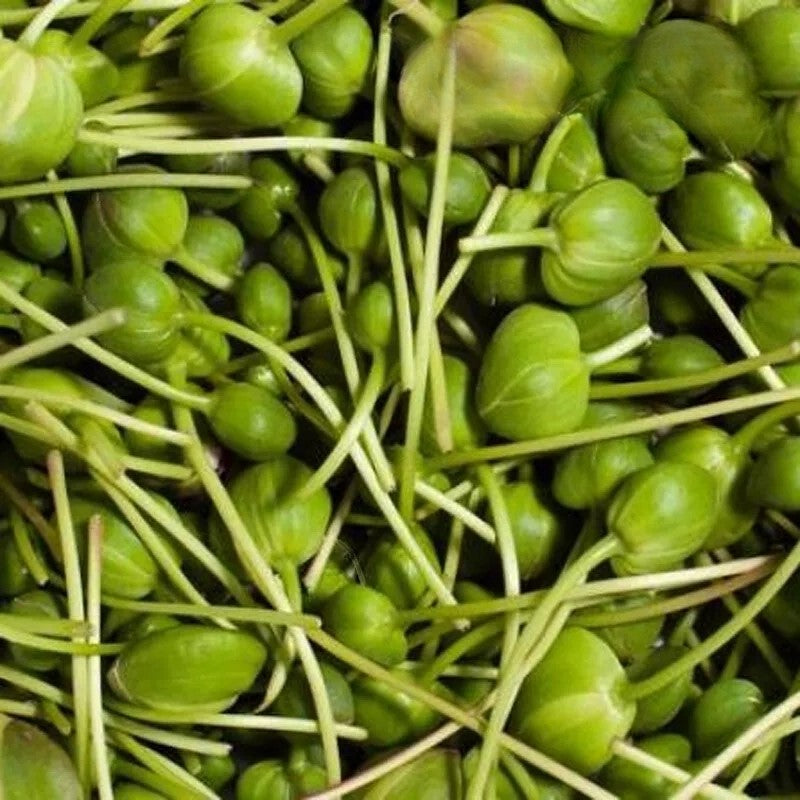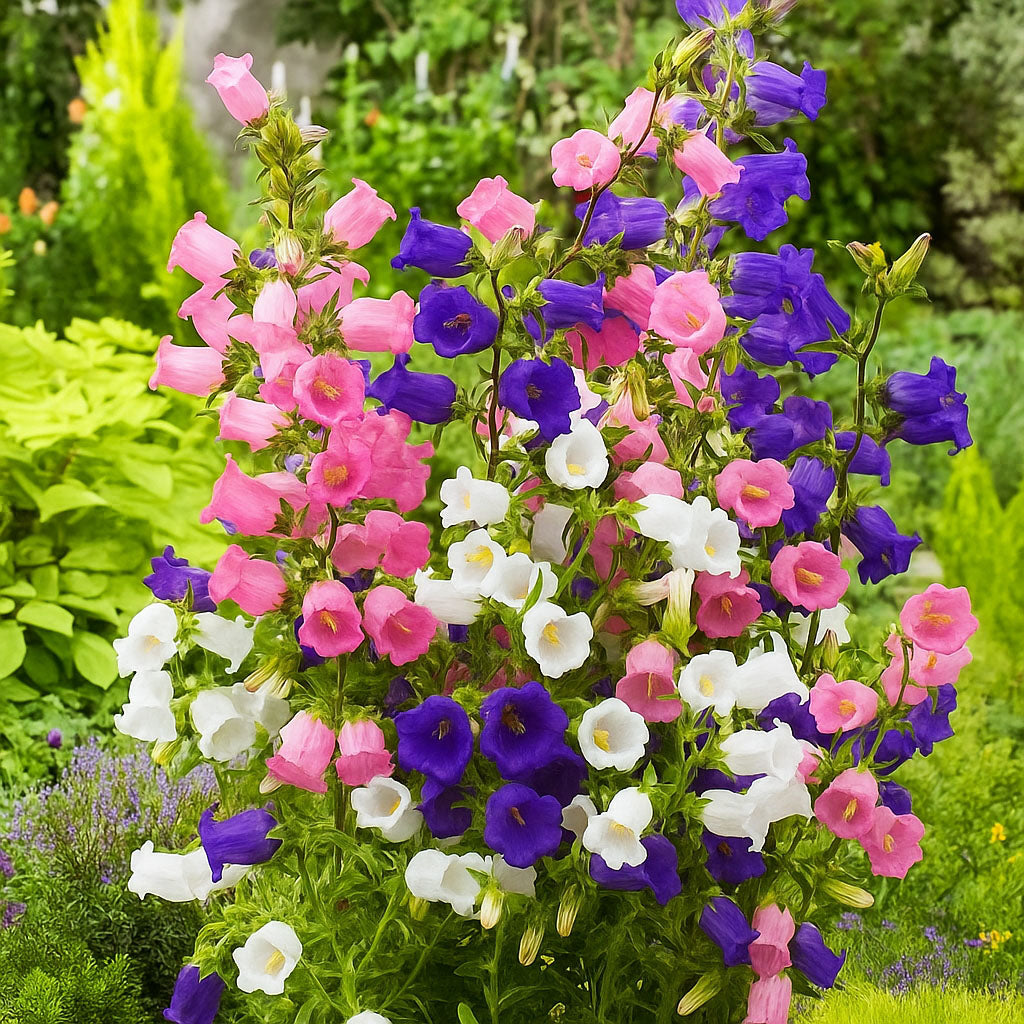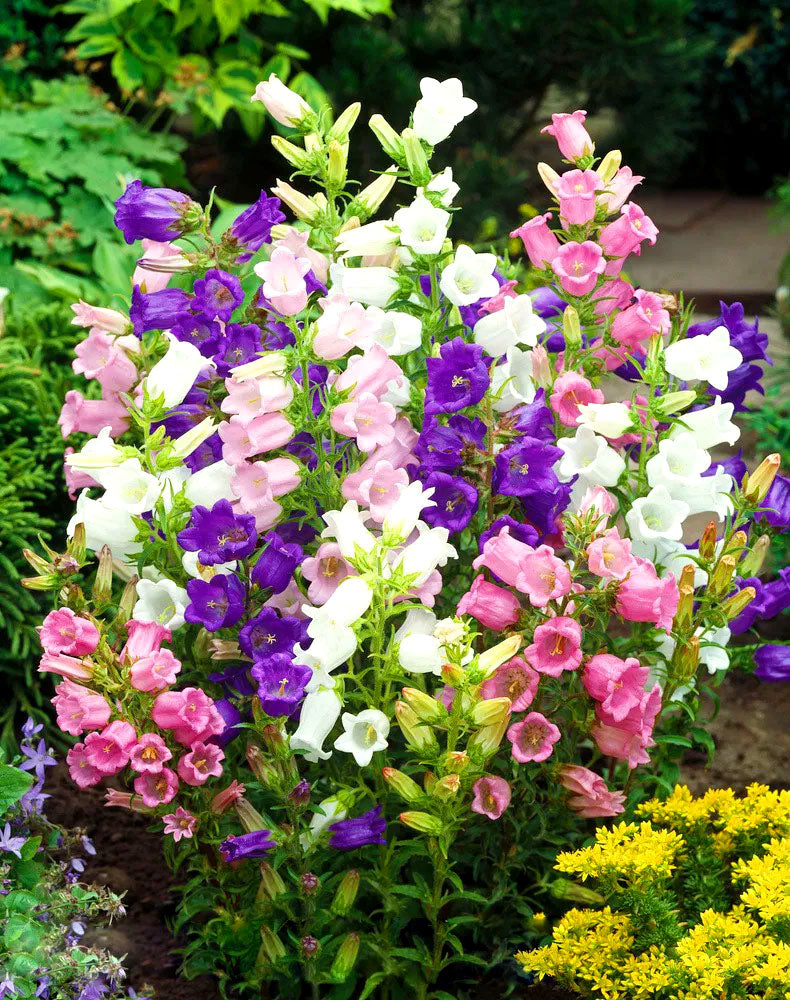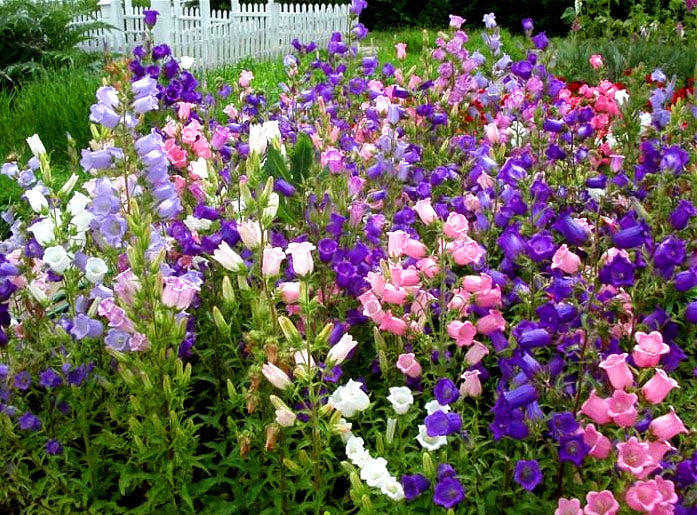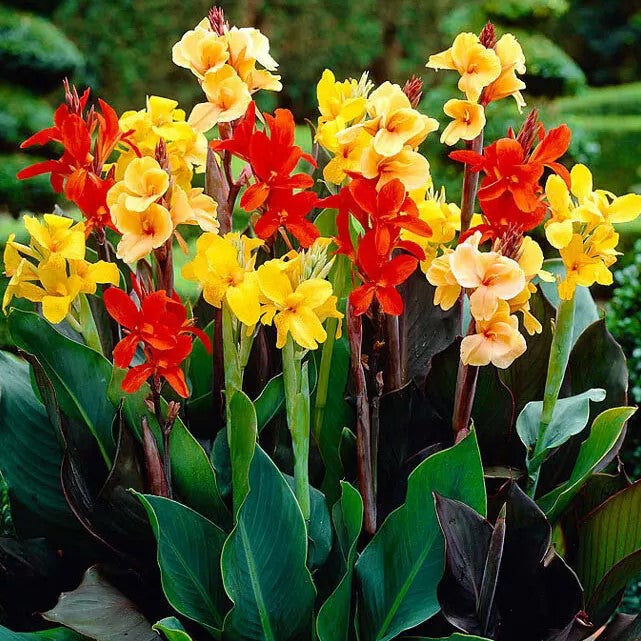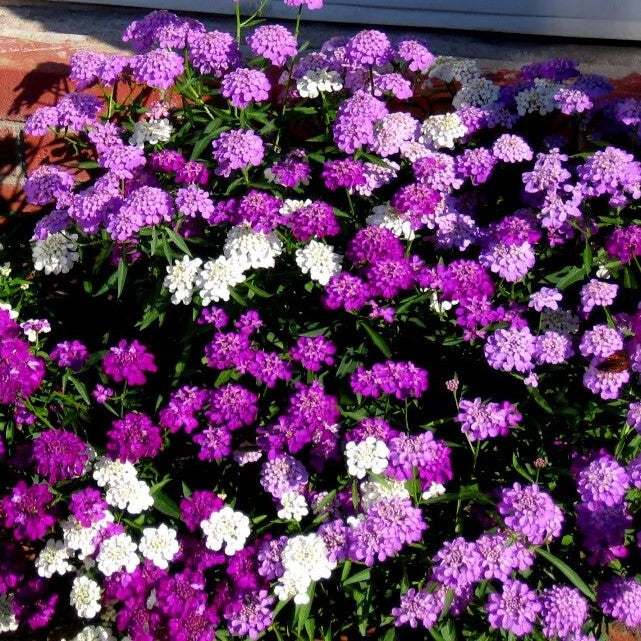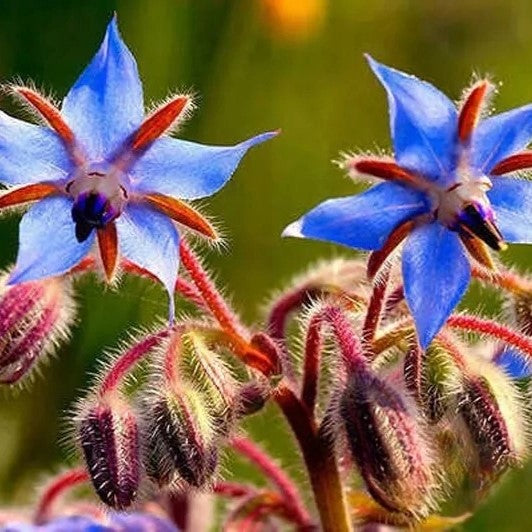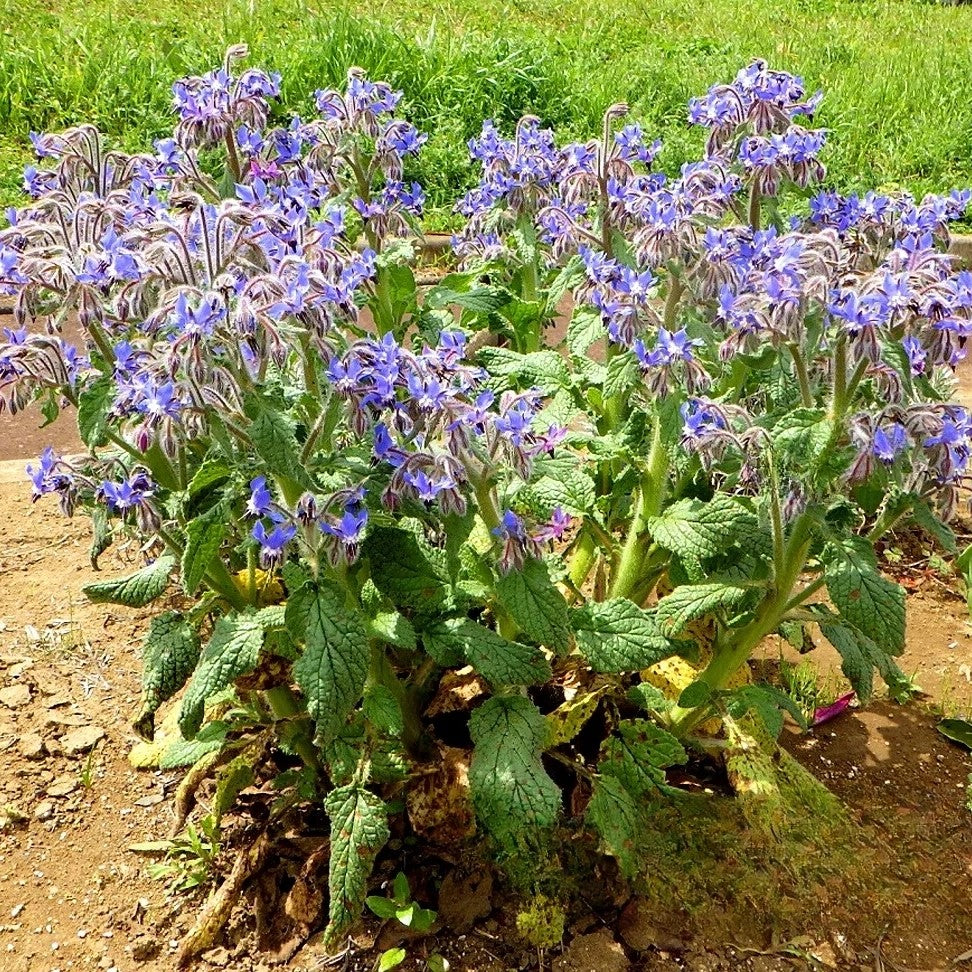Sort by:
287 products
287 products
China Aster Scarlet – 400 Seeds (Callistephus chinensis)
Description:
Bring vibrant color and classic elegance to your garden with China Aster Scarlet (Callistephus chinensis). This annual produces tall, sturdy stems adorned with dense, scarlet-colored flowers throughout late summer and autumn. Ideal for borders, cottage gardens, and cutting gardens, these asters provide long-lasting blooms and attract pollinators. Easy to grow from seed, they add striking beauty to any garden setting.
Key Features
-
Tall-growing annual with dense scarlet flowers
-
Long-lasting blooms from late summer to autumn
-
Excellent for cutting and floral arrangements
-
Attracts bees, butterflies, and other pollinators
-
Easy to grow and maintain
Ideal For
-
Borders and mixed flower beds
-
Cottage and cutting gardens
-
Pollinator-friendly plantings
-
Vibrant seasonal color displays
Sowing & Growing
-
Sow Indoors: February–April
-
Transplant Outdoors: May, after frost
-
Germination: 10–14 days at 18–22°C
-
Height: 60–90 cm
-
Spacing: 30–35 cm apart
-
Light: Full sun
-
Soil: Fertile, well-drained
Care Tips
-
Water moderately and consistently
-
Deadhead to prolong flowering
-
Support tall stems if necessary
-
Feed every 2–3 weeks with balanced fertilizer
Carnation Chadbaud ‘Benigna’ – 100 Seeds (Dianthus caryophyllus)
Carnation Chadbaud ‘Benigna’ (Dianthus caryophyllus) is a beautiful, compact annual with soft pink, fragrant blooms. Perfect for borders, rockeries, and containers, it adds elegance and color to your garden from late spring to autumn. Easy to grow and long-flowering, it also attracts pollinators.
Why Grow "Benigna"
-
Fragrant soft pink blooms
-
Compact, bushy growth habit
-
Long flowering period from late spring to autumn
-
Attracts bees and butterflies
Key Features
-
Type: Annual (Dianthus caryophyllus)
-
Height: 20–30 cm
-
Flowering: May–October
-
Position: Full sun to partial shade
-
Uses: Borders, rockeries, containers, patios, cottage gardens
Ideal For
-
Small garden beds and borders
-
Rockeries and container planting
-
Patio displays and window boxes
-
Pollinator-friendly gardens
Sowing & Growing
-
Sow indoors: February–April in seed trays
-
Sow outdoors: April–May after frost
-
Germination: 10–20 days at 18–22°C
-
Thin seedlings to 15–20 cm apart
-
Prefers full sun and well-drained soil
-
Deadhead to encourage prolonged flowering
Carnation Black – Seeds (Dianthus heddewigii ‘Chianti’)
Carnation ‘Black Chianti’ is a dramatic annual with deep, velvety maroon to near-black blooms that make a bold statement in beds, borders, and cut arrangements. Its compact habit, long flowering season, and striking color bring elegance and contrast to any garden. Easy to grow and perfect for adding depth to mixed displays.
Why Grow "Black Chianti"
-
Striking near-black, velvety blooms
-
Compact and easy to grow
-
Long flowering season
-
Great for cutting and arrangements
Key Features
-
Type: Hardy annual (Dianthus heddewigii)
-
Height: 30–45 cm
-
Flowering: June–September
-
Position: Full sun, well-drained soil
-
Uses: Borders, containers, cut flowers
Ideal For
-
Bold bedding schemes
-
Patio containers
-
Cottage and modern gardens
-
Dark accents in floral displays
Sowing & Growing
-
Sow indoors: February–April in trays/pots
-
Sow outdoors: April–June in prepared soil
-
Germination: 7–14 days at 18–22°C
-
Transplant or thin to 20–25 cm apart
-
Remove spent blooms to extend flowering
Carnation ‘Vienna’ – 200 Seeds (Dwarf Vienna, Dianthus caryophyllus)
Carnation ‘Vienna’ (Dianthus caryophyllus Dwarf Vienna) is a charming annual producing compact, fragrant blooms in delicate pastel shades. Its dwarf, bushy habit makes it ideal for borders, rockeries, containers, and patios. Long-flowering and easy to grow, it adds elegance and fragrance to any garden while attracting pollinators.
Why Grow "Vienna"
-
Compact, bushy habit perfect for small spaces
-
Fragrant, delicate pastel-colored blooms
-
Long-lasting flowering from late spring to autumn
-
Attracts bees and butterflies
Key Features
-
Type: Annual (Dianthus caryophyllus, Dwarf Vienna)
-
Height: 20–30 cm
-
Flowering: May–October
-
Position: Full sun to partial shade
-
Uses: Borders, rockeries, containers, patios, cottage gardens
Ideal For
-
Small garden beds and borders
-
Rockeries and container planting
-
Patio displays and window boxes
-
Pollinator-friendly gardens
Sowing & Growing
-
Sow indoors: February–April in seed trays
-
Sow outdoors: April–May after frost
-
Germination: 10–20 days at 18–22°C
-
Thin seedlings to 15–20 cm apart
-
Prefers full sun and well-drained soil
-
Deadhead to encourage prolonged flowering
Caper Bush – Seeds (Capparis spinosa)
The Caper Bush is a resilient Mediterranean perennial valued for its flavorful buds and aromatic leaves. Its small, edible buds are commonly pickled and used to enhance salads, sauces, fish dishes, and Mediterranean recipes. This drought-tolerant plant adds both culinary and ornamental value to gardens.
Slow-growing but hardy, the Caper Bush thrives in sunny, well-drained locations and can tolerate poor soils. Over time, it develops attractive sprawling branches and delicate white to pink flowers, followed by round seed pods.
How to Grow
-
Sow indoors: February – April
-
Sow outdoors: Spring in warm climates
-
Position: Full sun
-
Soil: Well-drained, sandy or rocky soil; avoid waterlogged conditions
-
Care: Water sparingly; prune to maintain shape and encourage flowering
Key Features
-
Hardy Mediterranean perennial with edible buds and aromatic leaves
-
Small, flavorful buds ideal for pickling and cooking
-
Drought-tolerant and low-maintenance
-
Produces delicate white-pink flowers and round seed pods
-
Suitable for sunny gardens, rockeries, or container cultivation
Harvest
-
Harvesting period: 2–3 years after sowing for mature buds
-
Pick buds before flowering for pickling and culinary use.
Short Tip
Provide full sun and well-drained soil to encourage healthy growth and abundant buds.
Canterbury Bells Mix Seeds (Campanula medium)
Canterbury Bells are classic biennial flowers cherished for their bell-shaped blooms in a range of vibrant colors. This mix produces tall, elegant stems covered in large, showy flowers that brighten borders, cottage gardens, and cut flower arrangements. With their long-lasting blooms and architectural form, they are perfect for adding vertical interest and charm to any garden.
What Makes It Special
-
Produces bell-shaped flowers in multiple colors
-
Tall, upright growth adds vertical structure to borders
-
Excellent for cut flowers with a long vase life
-
Biennial: flowers in the second year for a reliable display
Key Features
-
Botanical name: Campanula medium
-
Common name: Canterbury Bells
-
Seed count: Approx. seeds per pack
-
Height/Spread: 60–90 cm tall, 25–30 cm spread
-
Position: Full sun to partial shade, well-drained soil
-
Flowering period: Second year; early to mid-summer
-
Lifespan: Biennial
Ideal For
-
Borders and cottage-style gardens
-
Cut flower arrangements
-
Mixed flower beds
-
Pollinator-friendly gardens
Sowing Instructions
-
When to sow:
-
Indoors: February–March for transplanting
-
Outdoors: April–May in well-prepared soil
-
-
How to sow:
-
Sow seeds thinly on surface and lightly press into soil
-
Keep soil moist until germination (10–20 days)
-
-
Transplant/Thin: Space seedlings 25–30 cm apart
-
Care: Protect young plants from frost; stake taller varieties if needed
Canna ‘Indian Shot’ Mix – Seeds (Canna indica Mix)
Canna ‘Indian Shot’ Mix (Canna indica) is a striking annual producing lush foliage and vibrant flowers in a mix of red, orange, and yellow shades. These tall, tropical-looking plants add drama and color to borders, beds, and containers, flowering from mid-summer to autumn. Easy to grow in fertile, well-drained soil, Cannas are perfect for creating bold garden displays and attracting pollinators such as hummingbirds and bees.
Why Grow "Indian Shot" Mix
-
Stunning tropical foliage with bright, mixed-color flowers
-
Long flowering period from mid-summer to autumn
-
Tall and dramatic for borders, beds, and containers
-
Attracts pollinators and adds tropical flair
Key Features
-
Type: Annual (Canna indica Mix)
-
Height: 80–120 cm
-
Flowering: Mid-summer to autumn
-
Position: Full sun
-
Uses: Borders, beds, containers, tropical-style gardens
Ideal For
-
Bold summer displays and tropical-themed gardens
-
Container planting and patio decoration
-
Pollinator-friendly gardens
-
Adding height and vibrant color to mixed beds
Sowing & Growing
-
Sow indoors: February–April in trays or pots
-
Germination: 14–21 days at 20–25°C
-
Transplant outdoors after frost danger has passed
-
Space seedlings: 40–50 cm apart
-
Prefers fertile, well-drained soil in full sun
Candytuft ‘Fairy Mix’ Seeds (Iberis umbellata)
Candytuft ‘Fairy Mix’ is a charming annual featuring clusters of small, delicate flowers in shades of white, pink, and purple. Its compact, bushy habit makes it perfect for borders, rock gardens, and containers. Easy to grow and long-flowering, it adds a soft, colorful touch to summer gardens and attracts pollinators.
What Makes It Special
-
Clusters of small, delicate flowers in white, pink, and purple
-
Compact, bushy growth ideal for borders and containers
-
Long-flowering and low-maintenance
-
Attracts bees and butterflies
Key Features
-
Botanical name: Iberis umbellata
-
Variety: ‘Fairy Mix’
-
Seed count: Approx. seeds per pack
-
Height/Spread: 20–30 cm tall, 20–25 cm spread
-
Position: Full sun; well-drained soil
-
Flowering period: May–July
Ideal For
-
Borders, edging, and rock gardens
-
Containers and patio displays
-
Pollinator-friendly gardens
-
Softening paths and garden edges
Sowing Instructions
-
When to sow: February–April indoors; March–May outdoors
-
How to sow:
-
Sow seeds thinly on the surface of moist seed compost and press lightly
-
Germination occurs in 10–14 days at 18–20°C
-
-
Transplanting: Thin or transplant seedlings 15–20 cm apart
-
Care: Water moderately; deadhead spent flowers to prolong blooming
Borage – Seeds
(Borago officinalis) – Edible Flowers & Pollinator Magnet
Borage, also known as the starflower, is a fast-growing annual herb admired for its vivid blue, star-shaped flowers and fuzzy, cucumber-flavored leaves. A favorite of bees, butterflies, and other pollinators, it makes an excellent addition to herb gardens, vegetable patches, or pollinator-friendly borders. Both flowers and young leaves are edible – perfect for garnishing salads, desserts, drinks, or freezing into ice cubes.
Key Features
-
Plant type: Annual herb
-
Height: 50–70 cm
-
Spread: 30–40 cm
-
Flowers: Bright blue, star-shaped
-
Foliage: Grey-green, hairy leaves with cucumber flavor
-
Position: Full sun to light shade
-
Soil: Moderately fertile, well-drained
Ideal For
-
Herb & cottage gardens
-
Attracting pollinators (especially bees)
-
Edible flowers & herbal teas
-
Companion planting with tomatoes, strawberries, and courgettes
Sowing & Growing
-
Sow outdoors: April–June, direct in soil, 1 cm deep.
-
Germination: 7–14 days.
-
Spacing: Thin to 30 cm apart.
-
Flowering: June–September.
Care Tips
-
Easy to grow and self-seeding – will naturalize readily.
-
Pinch back growing tips for bushier plants.
-
Collect flowers regularly to encourage continuous blooming.
-
Water in dry spells but avoid overwatering.
Showing 252/287


